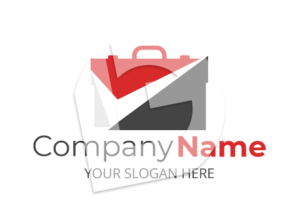Have you ever read the acronym JPEG or PNG? Perhaps even SVG or PDF? If you’re wondering what in the world these strange combinations of letters mean, you’re not alone. These are file types and they are used to distinguish between the many different types of image file formats.
If you purchase a logo from Logo Forge you will be supplied with four different versions of your logo. They are:
- JPEG
- PNG
- SVG
Let’s run through each of the above image formats and get a better understanding.
JPEG:
JPEG stands for Joint Photographic Experts Group. It is also commonly referred to as JPG and the two are interchangeable.
This version of your logo will contain a white background. It will be the smallest in file size when compared to the others making it a great choice for your website. Great right? Yes, but keep in mind that with compression comes a potentially noticeable drop in image quality.
The JPEG version of your logo is a perfect choice for your:
- website
- social media
- online advertising
Filename extension: .jpg, .jpeg, .jpe, .jif, .jfif, .jfi
Standard: Lossy image compression format
Type of format: ISO/IEC 10918, ITU-T T.81, ITU-T T.83, ITU-T T.84, ITU-T T.86
PNG:
PNG stands for Portable Network Graphics.
One of the main differences between your PNG and JPEG is transparency. This version of your Logo will contain a transparent background. You will be able to use it seamlessly on anything across the web, regardless of the background color of the area it’s applied to.
Apart from transparency, your PNG is also uncompressed. This directly results in a higher quality logo, but at the cost of an increased file size.
The PNG version of your logo is a perfect choice for your:
- website
- social media
- online advertising
- anywhere a transparent background is needed
Filename extension: .png
Standard: Lossless bitmap image format
Type of format: ISO/IEC 15948,[1] IETF RFC 2083
PDF:
PDF stands for Portable Document Format.
Your PDF Logo is an editable vector meaning it is infinitely re-sizeable! No matter how big or small you need your logo, the PDF version can do it. This version of your logo has to first be used in vector editing software such as illustrator and CorelDRAW.
It is not display ready and can’t be applied directly to your website without first being converted into either PNG and JPEG for example.
We recommend sharing this version of your logo with a graphic/web designer should they be doing work for you.
The PDF version of your logo is a perfect choice for when you require your logo to be resized or exported to a specific image file type, as well as printing.
Filename extension: .pdf
Standard: ISO 32000-2
Magic Number: %PDF
SVG:
SVG stands for Scalable Vector Graphics.
Just like PDF above, this version of your logo can scale to any size imaginable. It can be used across your website to display a responsive and pixel perfect version of your logo.
SVG tends to have a small file size depending on the level of detail in the logo.
If you are in the process of designing your website, give this file to your web designer- they’ll thank you for it.
The SVG version of your logo is a perfect choice for your website.
Filename extension: .svg
Standard: W3C SVG
Type of format: Vector graphics
We supply our customers with all pf the above four logo file types when you purchase one of our logos. Get the advantage over your competitors and start displaying your logo across the world with confidence.





